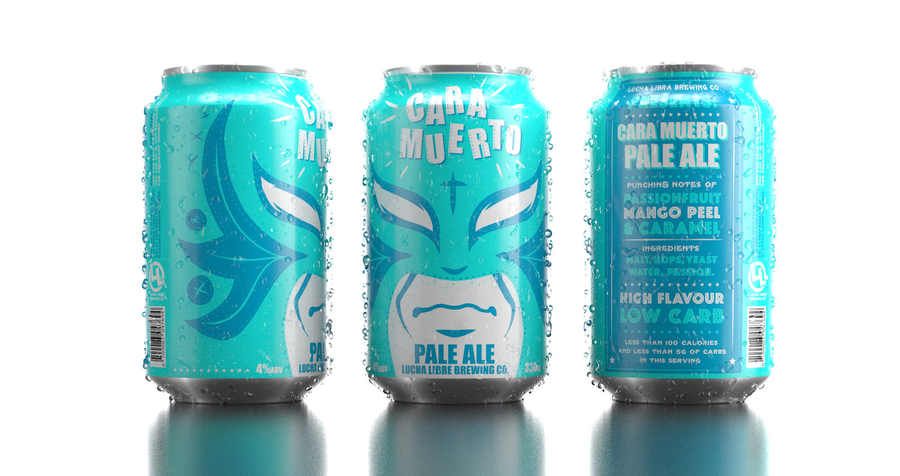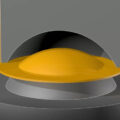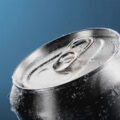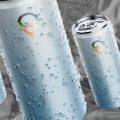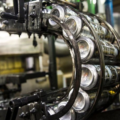The can decorator is an essential machine in the aluminum can production line, responsible for applying graphic designs and trademarks to the can surface. This white paper examines the role of the can decorator, the printing technologies used, the challenges associated with can decorating, and the maintenance strategies that ensure optimal operation.
Introduction:
In the beverage packaging industry, can decoration not only serves an aesthetic function, but also serves as a marketing and brand communication tool. Accurate, high quality printing is crucial to maintain brand image consistency and attract consumers.
Printing Technology in Can Decorators:
The can decorator uses advanced printing technologies, such as offset lithography and digital printing, to transfer images and text to the can surface. These technologies enable high resolution and the ability to reproduce a wide range of colors and complex designs.
Decoration Process:
The decoration process begins with the application of a base coat, followed by the colored inks. In the case of offset lithography, images are transferred from a plate to a rubber roller and then to the can. In digital printing, images are applied directly to the can by print heads.
Can Decorating Challenges:
Can decoration presents several technical challenges, including ink adhesion to the metal surface, resistance to abrasion and corrosion, and accuracy in color registration. In addition, the speed of the production line requires the can decorator to operate at high speeds without sacrificing print quality.
Maintenance of the Can Decorator:
Preventive and corrective maintenance is essential to ensure the availability and efficiency of the can decorator. Maintenance strategies include regular inspection of components, cleaning of printheads and rollers, and calibration of machinery to ensure registration accuracy.
Innovations in Can Decoration:
The industry continues to innovate in can decoration, with advances such as high-speed digital printing allowing for quick design changes and short runs. Other innovations include the use of environmentally friendly inks and UV curing systems that reduce environmental impact.
Quality Management in the Decoration of Cans:
Common Defects and Solutions
The can decoration process is critical to the presentation of the final product. However, various defects may arise during this process. We will identify the most common defects in the decoration of cans, analyze their causes and propose common solutions to ensure high quality in the production of aluminum cans.
Introduction: Can decoration is a stage where art meets engineering. Despite technological advances, the process is not without its problems. Identifying and resolving defects is critical to maintaining brand integrity and consumer satisfaction.
Common Defects in Can Decoration:
Misalignment of Colors (Bad Registration):
Cause: Misalignment in the configuration of the printing machines or wear of mechanical components.
Solution: Regularly calibrate logging systems and replace worn components.
Ink Spots and Splashes:
Cause: Excess ink or problems with the applicator rollers.
Solution: Adjust the ink viscosity and keep the rollers clean and in good condition.
Ink peeling:
Cause: Insufficient adhesion due to inadequate surface preparation or improper ink cure.
Solution: Improve the pretreatment of the can surface and optimize the curing parameters.
Streaks or Lines in the Print:
Cause: Damaged or dirty rollers, or problems with the printing plate.
Solution: Inspect and clean the rollers regularly and replace any damaged plates.
Color Variation:
Cause: Inconsistencies in the ink mixture or fluctuations in the printing process.
Solution: Strictly control the ink formulation and stabilize the printing conditions.
Air Bubbles or No Ink Dots:
Cause: Air trapped between the can and the ink or uneven ink application.
Solution: Adjust the roller pressure and ensure uniform ink application.
Image wear:
Cause: Friction during handling and transport or insufficient coating.
Solution: Apply a more resistant protective layer of varnish and improve the handling of the cans.
Quality Control Strategies: To minimize defects in can decoration, it is essential to implement a quality control system that includes:
Regular visual inspections.
Use of machine vision technology for automatic defect detection.
Preventive maintenance of decoration machinery.
Continuous training of operating personnel.
Periodic audits of the printing and varnishing processes.
Common machinery breakdowns that affect the quality of the finish. The following are some of the most common malfunctions and their possible solutions:
Smudges, Streaks and Smeared Ink:
Causes: May be due to too little ink on the rollers, dried ink on the rollers, damaged bearings, or improper roller adjustment.
Solutions: Clean rollers with solvent, adjust ink fountain blade to ensure proper flow, replace damaged bearings and readjust roller pressure.
Over or Under Ink:
Causes: This can result from excessive pressure on the plate or rollers, or insufficient ink flow from the fountain.
Solutions: Readjust the pressure on the platen and rollers to obtain the desired amount of ink, and adjust the fountain blade to improve ink flow.
Fountain Roller Not Turning:
Causes: May be caused by a broken or disconnected clutch.
Solutions: Check the condition of the clutch and repair or replace if necessary.
Faulty Cooling System:
Causes: Inadequate cooling can cause ink application problems.
Solutions: Check water flow and replace broken or clogged hoses.
Misadjusted or Overtightened Rollers:
Causes: Poor fit can lead to faulty printing or uneven ink application.
Solutions: Readjust the rollers to ensure correct contact and proper pressure.
Problems with Colors:
Causes: May arise from an improperly fitted plate or a worn or compressed blanket.
Solutions: Decrease the plate pressure, replace the blanket and adjust the pressure of the forming rollers.
Not Applying Good Exterior Varnish:
Causes: This may be due to insufficient varnish pump pressure or broken hoses.
Solutions: Increase the air pressure for the varnish pump and replace damaged hoses.
It is important to note that these solutions must be carried out by qualified personnel in industrial machinery maintenance. In addition, the implementation of a preventive maintenance system can help minimize the frequency of these breakdowns and improve the availability and efficiency of the can decorator.
